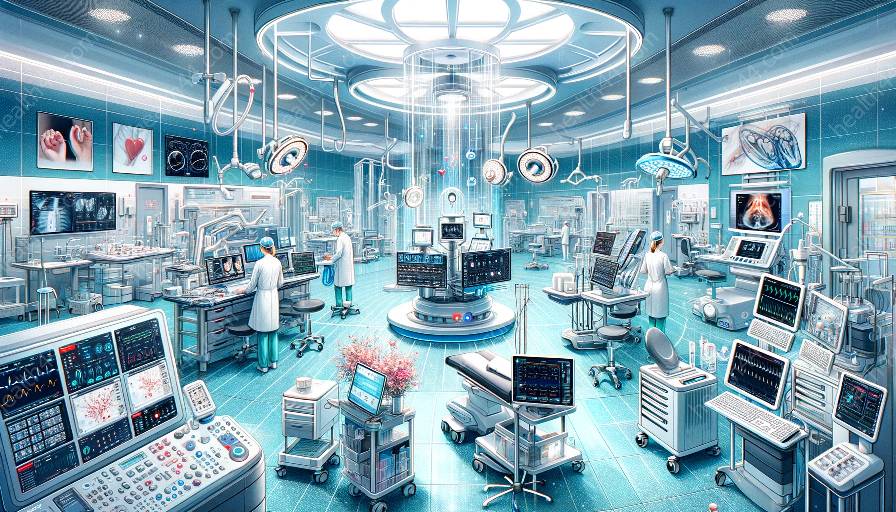Assistive technologies have significantly transformed the lives of individuals with disabilities, enabling them to perform daily activities and engage in various aspects of life more independently. The synergy between bioengineering and assistive technology has particularly revolutionized the design and functionality of devices tailored to meet the unique needs of people with disabilities. In this topic cluster, we will delve into how bioengineering influences the creation of assistive technologies and its compatibility with medical devices, paving the way for innovative solutions that aim to enhance the quality of life for individuals with disabilities.
The Role of Bioengineering in Advancing Assistive Technologies
Bioengineering is a multidisciplinary field that integrates principles and techniques from biology, engineering, and medicine to develop innovative solutions for various healthcare challenges. When applied to the design of assistive technologies, bioengineering plays a pivotal role in understanding the physiological and biomechanical aspects of disabilities, thereby enabling the development of personalized and effective solutions.
One of the key contributions of bioengineering to the design of assistive technologies is the utilization of advanced materials and fabrication techniques. By leveraging cutting-edge materials, such as shape memory alloys, carbon nanotubes, and biocompatible polymers, bioengineers can create lightweight and durable components for assistive devices, making them more comfortable and user-friendly for individuals with disabilities.
Bioengineering also harnesses the power of biofeedback and neuromuscular control systems to design assistive technologies that can seamlessly interface with the human body. Through the integration of sensors, actuators, and feedback mechanisms, these technologies can adapt to the user's movements and provide real-time assistance, thereby promoting greater autonomy and functionality for individuals with disabilities.
Enhancing Accessibility and Customization Through Medical Device Compatibility
Medical devices, which encompass a wide range of equipment and technologies used for medical treatments and diagnostics, are closely intertwined with the field of bioengineering. The compatibility between bioengineering and medical devices opens up new frontiers for creating assistive technologies that are not only tailored to individual needs but also seamlessly integrate with existing healthcare systems.
One of the significant advantages of incorporating bioengineering principles into the design of assistive technologies is the potential for enhancing accessibility and customization. Bioengineers work in tandem with medical device manufacturers to ensure that assistive technologies are compatible with standard interfaces and protocols, allowing for seamless integration with electronic health records, diagnostic tools, and healthcare monitoring systems. This interoperability enables healthcare professionals to access pertinent data and make informed decisions, ultimately improving the overall quality of care for individuals with disabilities.
Moreover, the compatibility with medical devices enables the personalization of assistive technologies based on an individual's unique physiological and functional requirements. Through the use of bioengineering techniques, such as 3D scanning and printing, assistive devices can be custom-fit to the user's anatomy, ensuring optimal comfort and performance. This level of customization not only enhances the user experience but also contributes to better long-term outcomes and acceptance of assistive technologies among individuals with disabilities.
Revolutionizing Functional and Aesthetic Design
Bioengineering has significantly influenced the functional and aesthetic design of assistive technologies, addressing both the practical aspects of functionality and the emotional aspects of personal expression and acceptance. By leveraging advances in biomechanics, biomimicry, and neurotechnology, bioengineers are able to create assistive technologies that closely emulate the natural function of human limbs and organs, thereby enhancing the user's sense of control and empowerment.
Furthermore, the integration of bioengineering principles has led to the development of assistive technologies with customizable aesthetics, allowing users to express their individuality and preferences. Whether through the use of personalized color schemes, textures, or modular components, bioengineered assistive devices are designed to promote a sense of ownership and pride, fostering positive psychological impacts and promoting the acceptance and adoption of these technologies within the community of individuals with disabilities.
Conclusion
The intersection of bioengineering and assistive technology represents a frontier of innovation that holds immense promise for transforming the lives of individuals with disabilities. Through the application of bioengineering principles, including material science, neuromuscular control, and medical device compatibility, the field of assistive technology continues to evolve, offering personalized, accessible, and aesthetically pleasing solutions that empower individuals with disabilities to lead more fulfilling and independent lives.


